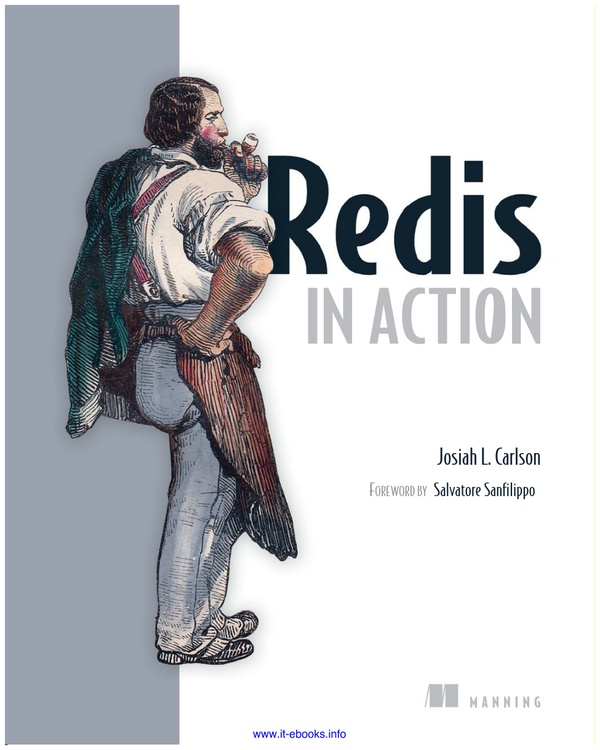Redis In Action(pdf)
Redis was created about three years ago for practical reasons: basically, I was trying to do the impossible with an on-disk SQL database. I was handling a large write-heavy load with the only hardware I was able to afford—a little virtualized instance. My problem was conceptually simple: my server was receiving a stream of page views from multiple websites using a small JavaScript tracker. I needed to store the lat- est n page views for every site and show them in real time to users connected to a web interface, while maintainin g a small history. With a peak load of a few thousand page views per second, whatever my database schema was, and whatever trade-offs I was willing to pick, there was no way for my SQL store to handle the load with such poor hardware. My inability to upgrade the hard- ware for cost concerns coupled with the feeling that to handle a capped list of values shouldn’t have been so hard, after all, gave me the idea of creating a throw-away pro- totype of an in-memory data store that could handle lists as a native data type, with constant-time pop and push operations on both sides of the lists. To make a long story short, the concept worked, I rewrote the first prototype using the C language, added a fork-based persistence feature, and Redis was born. Fast-forward to the present. After three years, the project has evolved in significant ways. We have a more robust system now, and with Redis 2.6 just released and the major work in progress being cluster and HA features, Redis is entering its maturity period. One of the most remarkable advancements in the Redis ecosystem, in my opinion, is its community of users and contributors, from the redis.io website to the Redis Google Group. Stemming from the GitHub issues system, there are thousands of people involved in the project, writing client libraries, contributing fixes, and help- ing other users. Redis is still a community project: it’s BSD licensed. There are no closed source add-ons or enhanced versions you need to pay for. The reference documentation is as accurate as possible, and it’s extremely easy to get help and get in touch with Redis developers or experts. Redis started in a pragmatic way, with a programmer who needed to get things done and couldn’t find the right tool for the tasks at hand. This is why I think a theo- retical book wouldn’t serve Redis well, and why I like Redis in Action: it’s a book for people that want to get things done. It doesn’t limit itself to a sterile description of the API; Redis features and data types are explored in depth using compelling examples. At the same time, Redis in Action comes from the Redis community, and more spe- cifically from someone who, before publishing this book, has already helped hun- dreds of Redis users in many different ways—from schema designs to hardware latency issues. The Redis Group is full of Josiah’s advice and contributions. The fact that system operation topics are also covered is a big plus. The reality is that most people need to both develop the application software and handle the deployment of the server. And I’d say that you need to understand system operations and the fundamental limits of the hardware and the system software you’re using in order to write an application that makes the best use of both. The result of these efforts is a book that will get you into Redis in a direct way, pointing your attention in the right directions to avoid common pitfalls. I think Redis in Action is a great addition to the Redis ecosystem and will be welcomed by the com- munity of Redis users. SALVATORE SANFILIPPO CREATOR OF REDIS Redis is an innovative data tool that offers more flexibility than other available NoSQL key-value stores like Cassandra or DynamoDB. Because Redis accepts hashes, strings, lists, and other structures as values, you can expand the key-value idea to a wider range of use cases. Redis works with in-memory datasets to provide lightning-fast response times, and makes it easy to persist data to disk on the fly. It's free, open source, and easy to utilize from most standard programming languages., Redis in Action introduces Redis and walks you through examples that demonstrate how to use it effectively. You'll begin by getting Redis set up properly and then exploring the key-value model. Then, you'll dive into real use cases including simple caching, distributed ad targeting, and more. You'll learn how to scale Redis from small jobs to massive datasets. Experienced developers will appreciate chapters on clustering Redis and internal scripting to make programming for Redis it easier to use.
